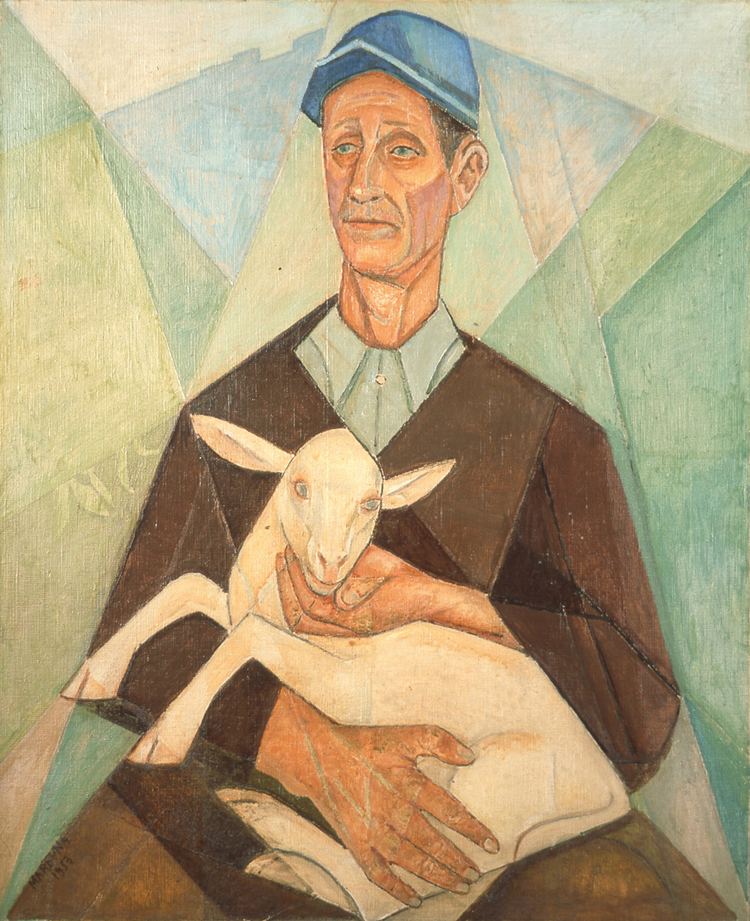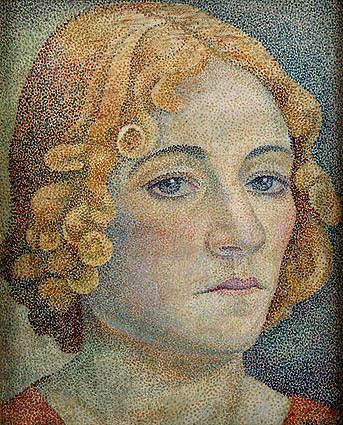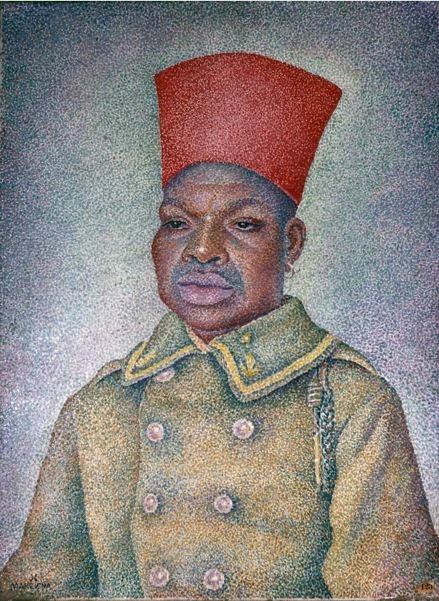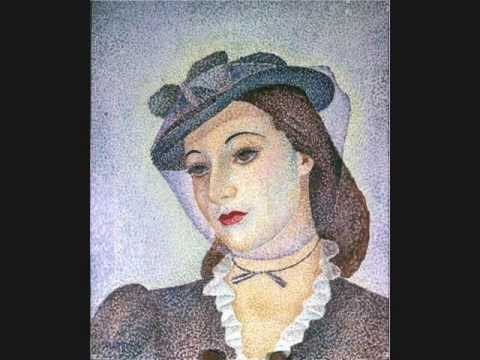Name Marie Vorobieff | Children Marika Rivera | |
 | ||
Died May 4, 1984, London, United Kingdom Artwork Hasidic dance during the celebration of Hanukkah Grandchildren Jean Brusset, David Philips Similar People | ||
Marie vorobieff forspel
Marie Bronislava Vorobyeva-Stebelska (Russian: Мария Брониславовна Воробьёва-Стебельская; 1892 – 4 May 1984), also known as Marevna, was a 20th century, Russian-born painter known for her work with Cubism and Pointillism. She is internationally known for convincingly combining elements of cubism (called by her "Dimensionalism") with pointillism and – through the use of the Golden Ratio for laying out paintings – structure. She tends to be accredited with having been the first female cubist painter. Though having lived the greater part of her life abroad – her formative years as a cubist painter in France and her mature years in England –, she is often referred to as a "Russian painter". From her relationship with the Mexican cubist painter and later muralist Diego Rivera in Paris she had a daughter, Marika Rivera (1919-2010), who herself went on to become a professional dancer and film actress.
Contents
- Marie vorobieff forspel
- La rivoluzionaria marie vorobieff marevna by f fiorellino
- Artists name
- Growing up in Russia
- Early career in Paris
- Later career in England
- Select list of paintings
- 1910s
- 1920s
- 1930s
- 1940s
- 1950s
- 1960s
- 1970s
- Dates unknown
- Publications
- References

La rivoluzionaria marie vorobieff marevna by f fiorellino
Artist’s name

In order to be able to trace information about Marevna’s life and her work it is important to bear in mind that she was also known, depending on the preferred usage or transliteration, as Maria Marevna, Marie Marevna, Marie Vorobiev, Maria Vorobieva, Marie Vorobieff Marevna, Maria Marewna Worobiew, Marevna Vorobëv, Marevna Vorobyev, Marevna Vorobieva, Marevna Vorobev-Stebelska, Marevna Vorobyov-Stebelska, Maria Vorobyova-Stebelskaya, Maria Bronislawowna Worobjewa-Stebelskaja, Maria Bronislavovna, Maria Rozanowicz-Vorobieff, and Rosanovitch Marevna Vorobiev.

Reputedly, the nickname Marevna was given to her by Maxim Gorky after a Russian fairy sea princess.
Growing up in Russia

Marevna reputedly was born in 1892 in Cheboksary in the administrative district of Kazan in Russia as Maria Bronislavovna Vorobyova-Stebelskaya to the Polish nobleman Bronisław Stebelski and the actress Maria Vorobyova and spent a lonely childhood in Tiflis, then under Russian control, now Tbilisi, the capital of Georgia. In 1910 she went to Moscow to study at the Stroganov Art Academy, but already in the following year left for Italy. On the island of Capri she was introduced to Maxim Gorki who called her after a Russian fairy sea princess by the name "Marevna" that she was to make her signature. A blue-eyed blonde petite, she was said not to have been a conventional beauty; but an outgoing nature paired with the proverbial depth of the Russian soul seems to have given her a special charm that easily elicited an enthusiastic echo from her contemporaries.
Early career in Paris
In 1912, as a twenty-year-old budding talent, Marevna moved to Paris, where she continued her art studies and soon began displaying her work at exhibitions. She became acquainted and, indeed, friends with some of the greatest artists and writers of the early twentieth century then resident in Montparnasse and especially at La Ruche, among them were Georges Braque, Marc Chagall, Jean Cocteau, Ilya Ehrenburg, Maxim Gorki, Max Jacob, Moise Kisling, Pinchus Krémègne, Fernand Léger, Henri Matisse, Amedeo Modigliani, Pablo Picasso, and Chaim Soutine.
Three years later, in 1915, the gifted Mexican painter Diego Rivera also temporarily resident in Paris at La Ruche – no Adonis but a known womanizer of violent temper – began a relationship with her while still in a common-law marriage with the Russian artist Angelina Beloff, who was six years his senior and then pregnant with his only son Diego Jr. who was not, however, to survive for more than 14 months.
Diego Rivera was nearly 30 years of age at the time and by then arriving at the masterly zenith of his cubist phase, having already exhibited his works at three exhibitions. In the company of such outstanding peers experimenting with this new style and producing convincing results, Marevna who herself discovered cubism as an eminently suited vehicle for her own talent, indeed, is thought to have been one of the first female cubist painter.
Despite Diego Rivera's assurances of his love for Marevna, their relationship was not to last but ended soon after the birth on 13 November 1919 in Paris of their daughter Marika. A comparison of their respective subsequent work, also of Marevna's paintings with those of Diego Rivera's later wife Frida Kahlo, suggests though that Marevna never quite lost sight of him. Nevertheless, for a time, until his tragic death, she was to find a kindred spirit in Chaim Soutine.
"Homage to Friends from Montparnasse" (1962)[1], of mural size yet painted long after she had left Paris, is a window into Marevna's heart, not only as regards Diego Rivera, however, but also Chaim Soutine and other Paris friends – a little circle completely dominated by Amedeo Modigliani.
Later career in England
Marevna's and Diego Rivera's daughter Marika went on to become first a dancer then a film actress, and then also a playwright, using the name Marika Rivera. At her first wedding in 1938, Marika married the Provence painter Jean Paul Brusset by whom she had a son, Jean Brusset. Subsequently she married the owner of the literary periodical "Polemic", Rodney Phillips, who for the duration of their marriage owned Athelhampton House in Dorset/England (1949–1957), and by whom in 1949 she had her second son, David Phillips.
Marevna lived with her daughter's family at Athelhampton. Her paintings from this time include a portrait of its owner – her son-in-law Rodney Phillips – and the stunning topiaries in its Great Court ("Pyramid Garden").
After the break-up of her daughter's second marriage, mother, daughter and the two grandsons moved to a significantly smaller though still sizeable property in Ealing, "the queen of the London suburbs", a few steps down the road from Ealing Abbey, a Roman Catholic Benedictine monastery and parish church. In Ealing Marevna "enjoyed some three more fruitful decades before her demise there in 1984".This was to gloss over the low points in the early 1960s. The Pushkin Club for Russian exiles in London arranged an exhibition of her paintings but the poor lighting and hanging made for a disaster and even at the rock bottom price of $60 there were no sales. In the Christmas Bazaar sale the club sold off her small watercolors for not more than $3. At home the household dogs had access to her storage and damaged her paintings. No money was available from her family for paint or materials nor was there even a room to paint in. She was fortunate enough then to meet Anya Teixeira at the Club. The latter bought her materials from her meager earnings as a clerk. These included the rolls of canvas from which the ultra-large pictures of her former colleagues in the Russian School of Paris painted. She successfully pleaded for Marevna to have the use of a large room to paint in so she could resume her career.
Marevna died in London on 4 May 1984.
Select list of paintings
While unfortunately the contract for the work ended in court proceedings, the catalogue and online reproductions of over 100 pictures are available (for reference only) on the official site of Anya Teixeira for the years up till 1967. These slides undoubtedly helped the subsequent purchase of much of Marevna's work by Oscar Ghez, the Swiss collector.
This catalogue and the slides have been digitized and are held for research purposes by the Women's Art Library, a branch of Goldsmith's College, London
